Woohoo! My Squares, Rectangles & Triangles Historical Sew Fortnightly Challenge is done, and on time (and I have another one 7/8 done, so hopefully I’ll be posting about that on Thursday).
May I present my not-at-all-historically-accurate Muff 2.0:
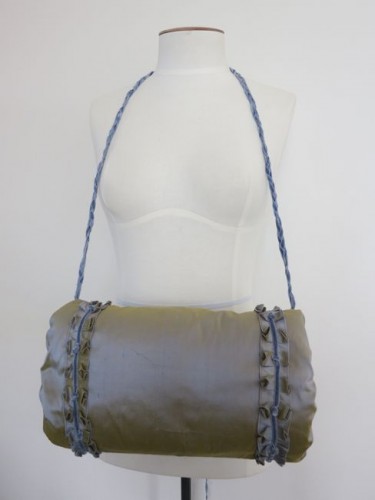
I was inspired by late 18th century silk muffs, like this one (obviously without the mezzotint):

Muff, English, 1785—1800, MFABoston
I’m using this muff as a prototype for a class I’m teaching, so I focused on making it work in a modern context, and playing with the construction, rather than on historical accuracy, or even research, as I did with my fur muff.
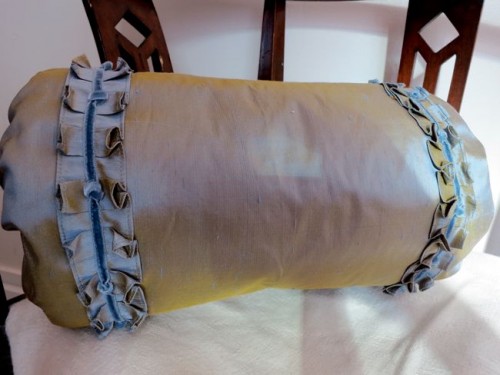
It was supposed to be a simple two-hour project, but I got a bit carried away when it came to trim. First I decided that none of the ribbons I had in my stash looked right with the fabric (and that was after I’d already spent about four hours rummaging through my stash trying to pick the right fabric and match fabrics), so I had to make self fabric strips to pleat round the muff.
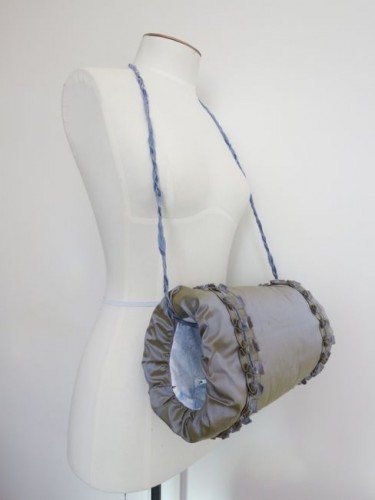
Because this was a modern muff, I hemmed the strips with a roll hemmer, rather than leaving them raw. Then the pleating had to be done by hand, then it didn’t look dynamic enough when it was done, so it needed another layer of ribbon trim, then that was too flat, so I hit upon the idea of tying a french knot in the ribbon every other pleat…
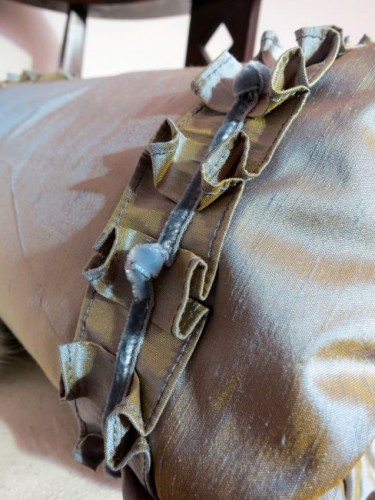
Note to self: don’t decide to tie french knots in ribbon every two inches and then machine sew it down if you don’t want to drive yourself crazy!
It was worth it though. I’m quite pleased with the trim.
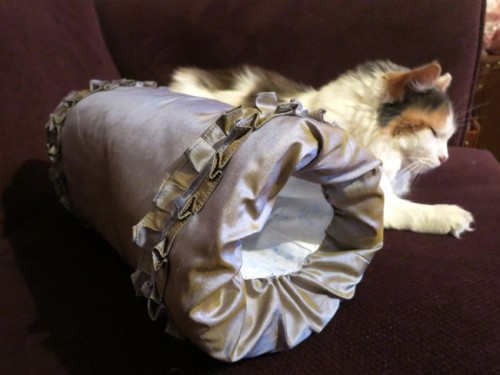
The muff is lined with not-remotely-accurate craft cotton with a toile de jouy pattern of carousels and swans and a park. And it has an inner zippered pocket. So, not historical!
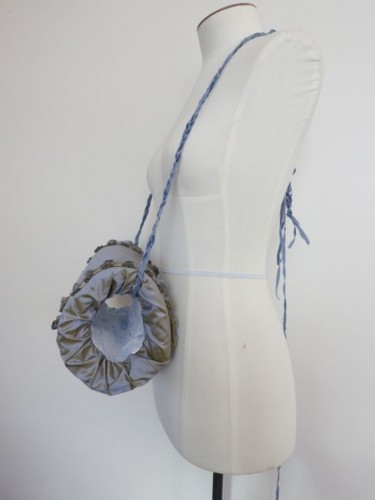
It does make me very happy though. There is something about a muff that is just so frivilous and joyful. When it was done I did my little happy dance around the house with my hands tucked in it singing “Muff, muff, look at my pretty muff….” while Mr D said “Ummmmm….” (last time I made one he asked me “you do know what that word means, right?”)
Dancing done, I made Felicity pose with it. She was less than impressed:
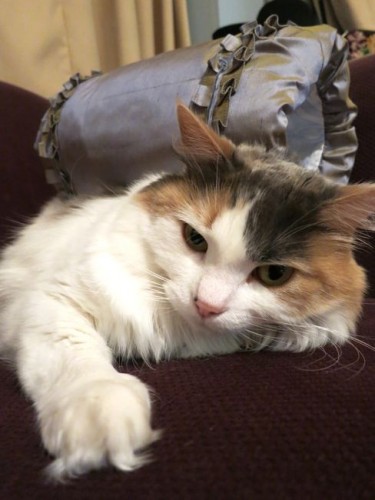
This morning she consented to another, less undignified, photo session:
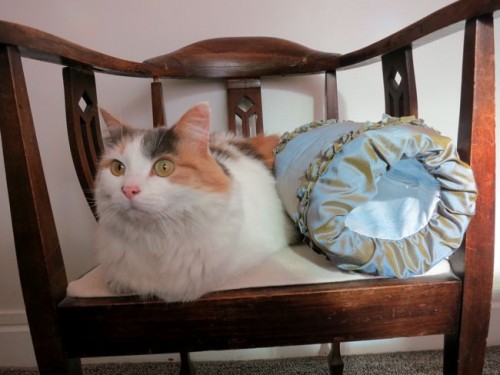
The Challenge: Squares, Rectangles & Triangles
Fabric: A scrap of shot gold-blue dupion silk, lined with carousel toile-de-jouy craft cotton.
Pattern: A rectangle for the outer, a rectangle for the lining, two squares for a pocket, long rectangles for trim.
Year: 1785-1810 inspired
Notions: Cotton thread, a zip, wool batting, stiff non-fusible interfacing
How historically accurate is it?: 25%, if I’m being generous. The general aesthetic is reasonable, and the colour is a popular late 18th century colour (though not necessarily for muffs). Dupion is not a period accurate fabric, nor is cotton an accurate lining, plus its got a zippered pocket, and is predominantly machine sewn. Transported back to 1800 it would baffle the fashionistas.
Hours to complete: 5, if we don’t count the time I spent looking for the right fabric.
First worn: Not yet, though it will go on display at Made on Marion today.
Total cost: $5 for the batting – everything else was scraps left over from other projects, or has been in my stash so long I can’t remember where it came from or how much it cost (and for me, that’s a long, long time).
Last thing: It needs a better name. I was thinking Verdigris, but am not loving that. Suggestions?

I like it a lot! The trim is charming – love the blue velvet with knots – and I am delighted that it has a pocket. So practical!
You could photocopy an appropriate picture onto some fabric and applique it on – wouldn’t be period, but would look good. Cameos would be too late, wouldn’t they? Hard to find a portrait brooch of the right size.
Dear Mr D.! You must make his life a lot more interesting than the standard model wife would do!
Thank you! I want to make a portrait muff someday, but I prefer this without one. There are certainly examples of late 18th century silk muffs without portraits – the one I posted just had the most similar shape and pleat trimming.
I’m certainly not the standard model wife
If I may ask–what would have been 1) a period color, and 2) a period outer fabric and lining fabric for a muff?
Of course you may ask, and I am happy to answer! All the extent examples or period images that I can find of unpatterned late 18th century fabric muffs (there are examples with pre-embroidered fabric) are in ivory, white, pale pink, grey, tan, pale yellow, pale blue, or other very soft pastel shades. They are all silk-satin, though a silk taffeta isn’t completely beyond the realm of plausibility.
Whenever they are mentioned, the linings are silk. Unfortunately I can’t find a museum example that specifies what the weave of the lining is, but Carolyn (brocade goddess) suggested a thin silk similar to habotai as a lining for 18th century fur muffs, and that probably applies to fabric ones as well. I suspect the same fabric as the outer is also a possibility. Elizabeth Farren’s fur muff is lined in the same silk satin as her cloak, and there are matching silk satin muffs and cloaks, so in a continuation of that logic the lining could be silk satin.